How Vodafone supplied the most mobile data ever to Glastonbury Festival 2023
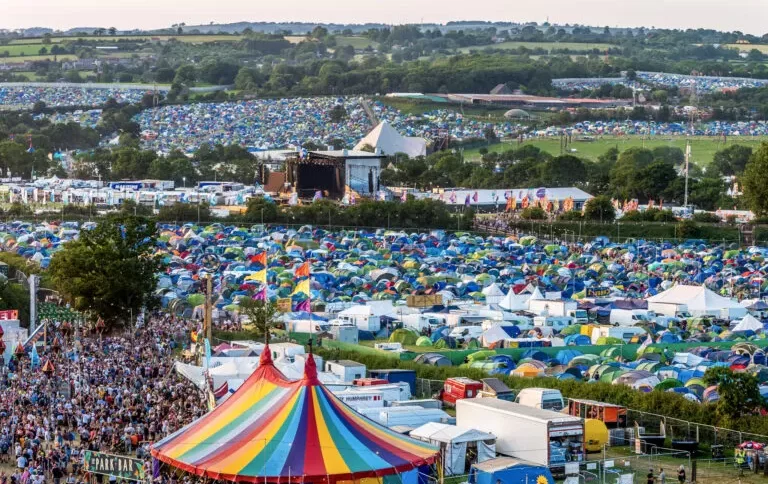
- Festivalgoers downloaded 169 terabytes of data at Glastonbury 2023
- Vodafone planned its temporary network to support the huge demand
- Head of Radio and Performance, Ker Anderson, explains how it was done
UK festival season is truly in full swing, after kicking off last month with epic performances from Elton John, Guns N’ Roses, and Lizzo at a sunny Glastonbury. Music lovers will swarm to the likes of Reading and Leeds, Boomtown Fair, and Camp Bestival throughout the summer to watch their favorite artists and either roast or take cover under a £40 sheet of polyester.
But do these experiences really happen if you don’t post a picture or video on social media? Fortunately, despite being in close proximity to hundreds of thousands of other smartphones, attendees can do this, and also make use of ‘what3words’ to stumble back to their tent later on. This is all thanks to the help of your friendly neighborhood network provider, which will be working overtime to ensure festivalgoers can still get service in temporarily overpopulated rural areas.
YOU MIGHT LIKE
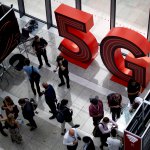
Vodafone’s 5G network reaches millions in Germany
This year, for the largest greenfield music and performing arts festival in the world – Glastonbury Festival in Pilton, Somerset – that provider was Vodafone. The network took over from EE, which had been its official technology partner for over 20 years, and will continue to do so for the next few festivals. Providing service at the festival has become a sizeable task in recent years, with data consumption nearly doubling between 2019 and 2022 alone.
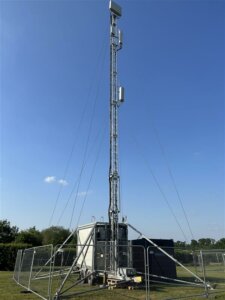
Vodafone installed nine masts over Worthy Farm which boosted the temporary network to its highest capacity ever. Source: Vodafone
In the months leading up to Glastonbury 2023, Vodafone installed nine masts over Worthy Farm which boosted the temporary network to its highest capacity ever. And thank goodness it did, as 169 terabytes (TB) of data were downloaded throughout the five-day event – the equivalent of downloading a two-hour movie in HD 400 times an hour each day. This is also the most data ever used at Glastonbury and marks a 99 percent increase on the previous year.
Ker Anderson, Head of Radio and Performance at Vodafone, exclusively revealed to TechHQ that this spike happened for two reasons. The first is that there is an exponential growth in demand happening across the UK network anyway, which the Glastonbury spike mirrored. “We’re seeing around a 50 percent increase in traffic year-on-year,” said Mr Anderson.
The second reason is our greedy relationships with our phones. If given greater network capacity, people will always use it to its limit, and Mr Anderson’s team made sure that the Glastonbury network could cater to our every audiovisual desire.
YOU MIGHT LIKE

Ericsson and Vodafone achieve network slicing in UK
He said: “People’s behavior changes when it’s working really well, and that drives it up. If you haven’t got good connectivity, you think, ‘I’ll just turn it off and I’ll do the minimum. I’ll find the time when I can do it.’
“Whereas if you think, ‘Blimey, I’ve got 5G coverage everywhere. I’ve got super bandwidth, super speed, I can pretty much do whatever I want, whenever I want,’ people decide they’re going to record the whole of this next song by Elton John, because they know that somebody that really loves it, and why would they not send the whole lot on a WhatsApp.”
The largest contributor to increasing data demands at festivals is video uploads. This could be influenced by TikToks and live streams, but also broadcasting networks, like the BBC, that might stream performances for 12 hours a day. This means that temporary networks need to be set up differently from permanent ones, with which, most of the time, people pull down information.

During Elton John’s headline performance, 450 GB of data was uploaded through Vodafone’s temporary network. Source: AFP
“They’re watching YouTube, they’re streaming TV – they’re basically downloading information,” said Mr Anderson. “But when you have special events, whether it’s the Grand Prix or the festivals, people do a lot more uploading. There are a lot doing ‘Look at me, this is where I am’ posts on social media, sending videos on WhatsApp to friends and family, sending photographs. People are not so interested in what’s happening in the rest of the world.
“We change the configuration in the network to allow more uploads, and it’s the only time you really see this.”
How to provide phone service at a festival
Vodafone provides a temporary network to around 80 special events throughout the year, which include music festivals like Reading and Leeds, Parklife, BST Hyde Park, TRNSMT Festival, and Kendal Calling, but also large sporting events like Wimbledon and Badminton Horse Trials. It started doing this around 20 years ago, but the job became more intense after the advent of 4G in 2012.
Now, Mr Anderson’s team has a tried-and-tested framework to follow when planning the network launch at a new festival. First, they determine the layout of the event and predict where there will be large areas of people, like stages, car parks, and campsites. Then they use data from previous events to predict how capacity requirements will change throughout the day and the market share.
They also take into account the current level of coverage in the area. Mr Anderson said: “If we’re talking about Glastonbury or Badminton, for example, there is coverage in those locations, but it has very, very low capacity because there are not many cows using mobile phones, so we don’t have a huge demand in those areas!”
With all this information, the team plans the number of temporary cell sites needed on the event – for Glastonbury 2023, the event needed nine. Each one must be connected to the main Vodafone network, usually through a microwave link. These require a direct line of sight with a permanent cell tower or network node, which is not always easy to accomplish. “A lot of those rural locations have got quite mature, quite tall trees,” said Mr Anderson. “We’re kind of dodging trees a little bit!”
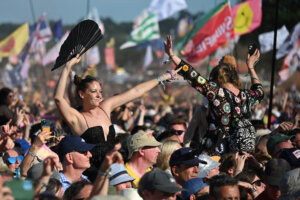
Glastonbury Festival is the most challenging event Mr Anderson’s team has to cover. When the festival is taking place, the site becomes the fourth largest city in the South West. Source: AFP
He added that, during one fateful Reading Festival, someone set up a large tent in front of a local cell site on top of a fire station in Reading, which was connected to a festival mast. This caused a panic as, if the canvas had gotten wet through rain, it would have killed the link. Mr Anderson said: “You get moisture absorption on microwave links. If you’ve ever experienced network outages when it snows, that’s usually the reason.” His team, therefore, had to move their temporary mast to establish a more secure link. “You’ve got to be able to think calmly on your feet at the eleventh hour,” he said.
After deciding the locations of each cell tower, Vodafone experts plan how the multi-beam antennas that will be installed on them must be configured to capture all the traffic in that specific area. “The actual bearing that those antennas are on is super critical, they have to be very accurately aligned,” Mr Anderson explained.
For example, at the busiest stage at Glastonbury Festival 2023 – the Pyramid Stage – the circa 210,000 festivalgoers consumed 20 TB of data. During Elton John’s headline performance, 450 GB of data alone was uploaded. The nearby cell towers had to be uniquely configured so that their antennas could support the massive data transfer in a relatively small area.
Cell towers vs. The World
Each festival site comes with its own unique set of challenges when planning the temporary network. Mr Anderson said: “We do have to do some frequency coordination when we do Download because it’s right next to East Midlands Airport.” This even comes down to how they get the 15 to 20-meter cell towers to the sites themselves, as many of the rural locations are only accessible by narrow country lanes that are not suitable for flatbed trucks.
Glastonbury Festival is the most challenging event Mr Anderson’s team has to cover. When the festival is taking place, the site becomes the fourth largest city in the South West, behind Bristol, Plymouth, and Swindon. They must essentially install a network in just a few weeks that would normally take years to build.
Mr Anderson said: “From the very start, we know that the Pyramid Stage is going to be where all the headline acts play, so we know that’s where the biggest crowd [will form]. The whole area was planned to maximize capacity because we knew that would be our biggest pinch point during the five days of Glastonbury.
“But you never quite know just how many people are going to be there or what share of those people are on your network. You never quite know exactly how intense they are; just watching it or actually sharing content or live streaming. You plan for the best that you can offer.”
But, he added, special events “all come with dramas.” He said: “I don’t think we’ve ever had one where there’s not something that goes wrong last minute.”
Cell sites can break or bits can fall off, generators overheat or run out of fuel. But having a working network is becoming more and more imperative to these special events every year, so Mr Anderson’s team is always learning from mistakes and expanding their contingency plans. Lucky engineers get to stay at Worthy Farm for the duration of Glastonbury Festival because it would be too difficult to get them there quickly in the event of an emergency breakdown. The cell sites do not all rely on the same microwave link, so the site isn’t left with no coverage at all if one fails. Mr Anderson’s team also hides away spare generators and backup batteries, just in case.
He said: “When there’s camping, these places never sleep. You don’t get a window in the night where you could do some maintenance. You have to assume that the demand is there 24/7.
“If you get it wrong, and you don’t plan your contingency very well, then you could be down with no coverage for the full duration,” he said. The site for Kendal Calling in Cumbria does not have any service when the festival is not taking place.
The future of festival data
With this year’s massive Glastonbury data spike now behind it, Vodafone is now considering how to plan for the likelihood that traffic doubles again at next year’s event. This could be further amplified if 5G becomes more integrated into the festival’s operation. For example, it could be used to provide live streams, connect autonomous vehicles, or provide “effectively live” music to people after curfews when the speakers must be turned down.
The same considerations must be made at other events Vodafone serves, which could provide different challenges. Wimbledon is a “quite compact” tennis tournament, so “you can’t just go in there and drop in mobile phone masts anywhere,” explained Mr Anderson.
“It’s quite a pristine environment. The last thing we want is a mobile phone mast with a generator chugging away in the background. We will need to look at how we continue to serve as Wimbledon as traffic continues to rise because we can’t just put more mobile masts in there.
“We’re constantly being challenged by these special events on how we can manage the increasing demands every year.”
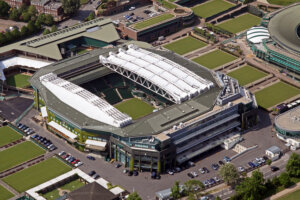
Wimbledon is a “quite compact” event, so “you can’t just go in there and drop in mobile phone masts anywhere” to increase network coverage, explained Mr Anderson.
In the past, networks have found unique ways of integrating masts into the infrastructure of smaller sites so they can continue to manage larger demands. “If you’re sitting in a stadium and you look up to the gantries, you will see the antenna sitting there pointing down,” said Mr Anderson.
The network also needs to consider technology changes when planning future events.
Mr Anderson said: “If you go back three years, you might have had 2 percent of data traffic on 5G, and if you went back to last year, you would have had 15 to 20 percent of data traffic on 5G. This year [at Glastonbury Festival], we had 40 percent of data traffic.
“So next year, I’m expecting more than 50 percent of data traffic to be on 5G. That changes the dynamics for us in terms of how we configure our network to make sure that we balance the capacity on 4G and the capacity on 5G and serve that changing demographic of technology.
“The reason we’re passionate about special events is that it’s an important life experience for many people to go to Glastonbury, to go to the Grand Prix, to go to Wimbledon, to go to Winter Wonderland. These are special moments in people’s lives.
“Life is about experiences, and people want to share those experiences and remember them. We want to make sure that we’re offering the connectivity that facilitates them to be the most memorable occasions they could have.”









